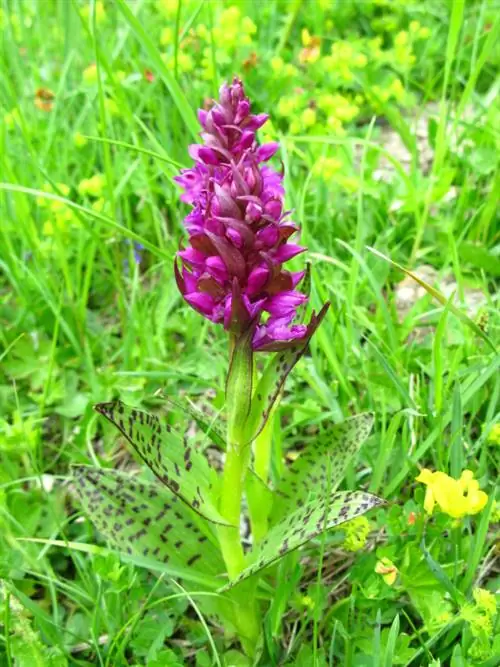- Author admin [email protected].
- Public 2024-01-02 03:03.
- Last modified 2025-01-23 11:22.
For some a pet, for others an annoying pest: martens are cute and at the same time a danger to cars and insulation material. Find out everything there is to know about martens in the following profile: from external characteristics to behavior and reproduction.

What is basic information in the marten profile?
In the marten profile, real martens, like stone martens and pine martens, are predators of the canid order. They live in Eurasia and North America and feed on small mammals, birds, eggs, berries and fruit. Their size varies between 40-65 cm and weight of 0.8-2.3 kg. The mating season is between June and August.
The marten in the profile
Within the marten family there are around 60 species, which also include stoats, weasels, otters and badgers. Most of the time, the term marten refers to “real martens”, of which there are only eight species. Here is an overview of the general characteristics of real martens in the profile:
- Order: Predators
- Superfamily: Canids
- Distribution: Eurasia and North America
- Habitat: forest, only the stone marten is close to people
- Food: Small mammals, birds, eggs, berries and fruits
- Size (body length): 40 to 65cm
- Tail length: 12 to 40cm
- Weight: 0.8 to 2.3 kg
- Fur color: Mostly gray-brown, some species have light spots on the neck (e.g. stone marten)
- Mating season: From June to August
- Closed season: depends on the federal state, usually from March 1st to mid-October
Rock and pine martens
The pine marten and the stone marten are most commonly found in Germany. Even though the two look quite similar, what sets them apart is the fact that stone martens stay close to people and cause damage, while pine martens live in the forest and avoid people.
Tip
There is a closed season for both species in all federal states. Stone martens may be hunted outside of the closed season (as long as you have a hunting license), pine martens may not be hunted in some federal states.
The stone marten in the profile
The stone marten is the only marten that stays close to humans. For the same reason it is a big nuisance, because martens like to live in insulation material on the roof and love eggs; Male martens nibble on cables in the car during mating season. How to recognize the stone marten:
- Appearance: gray-brown, bristly fur with a white patch that extends from the lower jaw to the paws
- Size: Total length (including tail) 65 to 85 cm, males larger than females
- Weight: 1.1 to 2.3kg
The pine marten in the profile
Pine martens are slightly smaller and slightly lighter than their relatives the stone martens. Her fur is also a little darker, including the spot on her neck.
- Appearance: dark brown to slightly reddish fur with yellow-brown throat patch
- Size: Total length including tail 60 to 80cm, males larger and heavier than females
- Weight: 0.8 to 1.8kg
Reproduction of martens
In summer, both stone martens and pine martens go looking for a partner. The fertilized egg goes dormant until February, followed by a gestation period of one month. The young are born in March, which is why the closed season begins here. The little ones are blind for five weeks and dependent on their mother for three to four months. You can find out more about marten reproduction here.
Marten as climber
Martens are excellent climbers. They can rotate their feet up to 180° and can also climb vertically. They easily climb both downspouts and trees and get onto the roof and into the attic. They can also jump up to two meters.
Marten in winter
Martens do not hibernate. Since there is less to eat in winter, they build up a small supply in autumn, but that doesn't mean that martens don't hunt in winter. They like to retreat to warm places, such as garages, attics or - in the case of pine martens - tree hollows.






